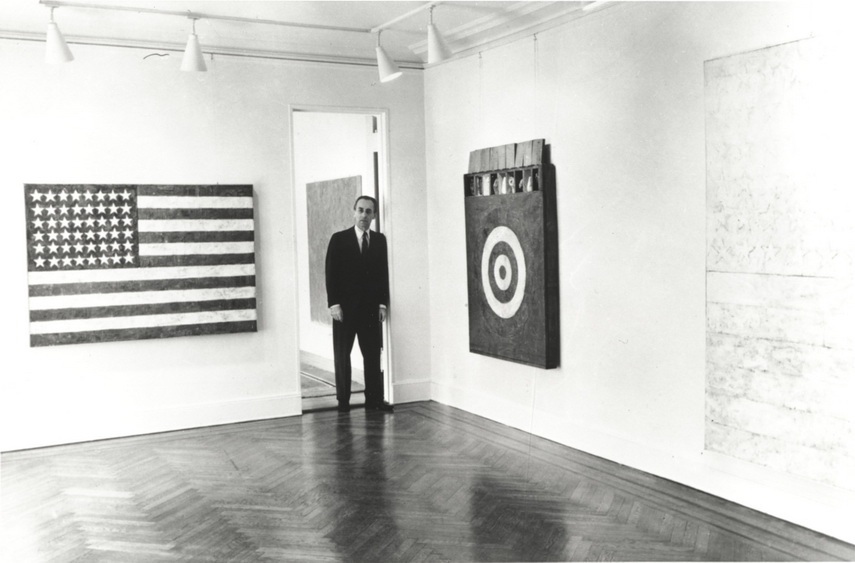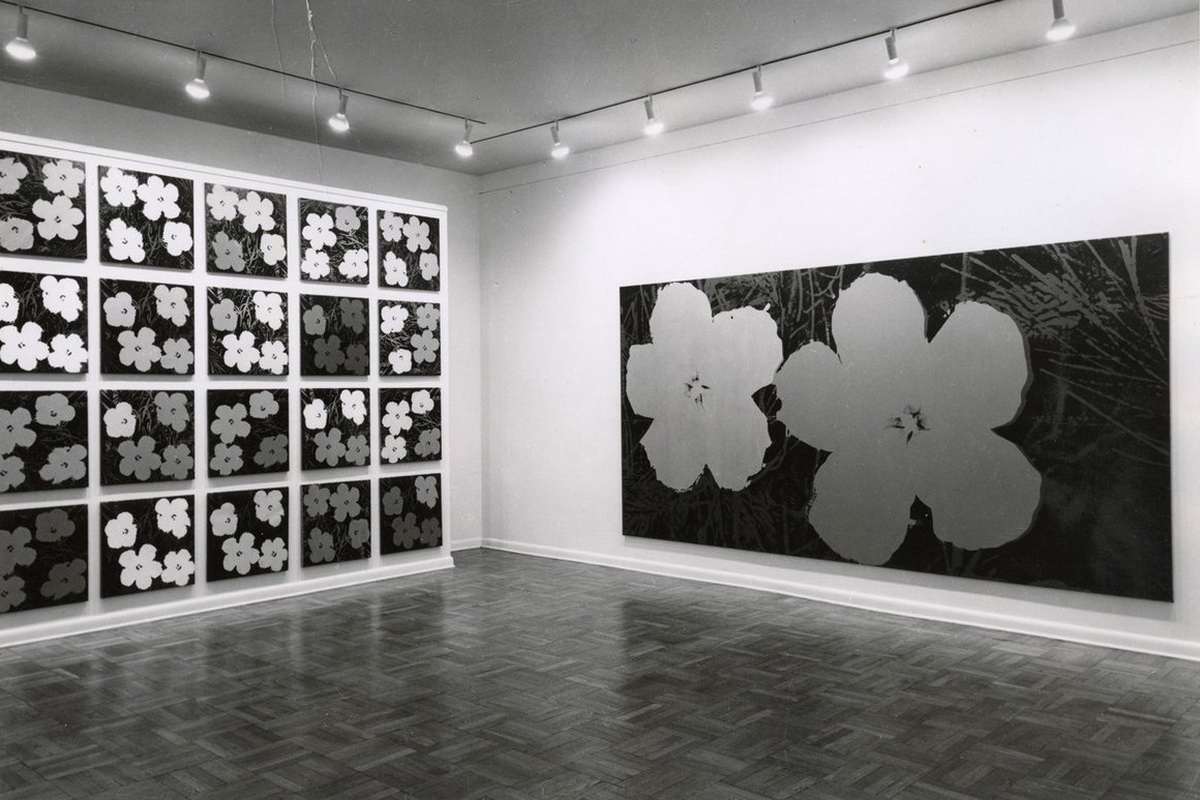[ad_1]
One of the best known New York art dealers and promoters of Surrealism, Abstract Expressionism, Neo-Dada, Pop, Minimal, Conceptual art and even Neo-expressionism, Leo Castelli ran an exciting exhibition space, the melting pot of progressive art currents especially in the period from the late 1950s until the mid-1980s. Despite the changing circumstances throughout the eighth and ninth decade, the Castelli gallery remained an influential space for contemporary art in New York, where it still operates today.

The Fascinating Biography of Leo Castelli
The famous art dealer Leo Castelli was born in Trieste in 1907 under the name Leo Krausz and was raised in an affluent Italian/Austro-Hungarian Jewish family. After a brief stay in Vienna during World War I, the Krauszs returned to Trieste and during the Italization of names under the Mussolini regime, they changed their name to Krausz-Castelli, and eventually to just Castelli.
Leo graduated from the University of Milan, and in 1932 he moved to Bucharest for a position in an insurance company; out there, he married Ileana Schapira, and two years later the couple moved to Paris where Leo joined Banca d’Italia. During that period, with the help of his wife, the young businessmen founded his first gallery at Place Vendôme in Paris in 1939. The venue was named after its co-director, the decorator René Drouinand, and it was focused on showcasing surrealist art.
At the outbreak of World War II, Ileana and Leo managed to escape to America, while Castelli’s parents did not survive in Budapest, as they were harassed and killed by the Hungarian fascists. The couple arrived in the States in 1941, and shortly after, Leo attended an economic history course at Columbia University. At one point he also volunteered for the Army and served in the intelligence service in Europe. After the war ended, he acted as interpreter for the Allied commission that controlled the city in Bucharest, and for the military efforts he was given the American citizenship.
Back in New York, Castelli worked for a while as a manager in his father-in-law’s clothing factory. His first deal happened in 1947 when he sold a hundred canvases by Kandinsky though Drouin. In 1949, the influential coterie the Club was founded where the Castellis and the art deal Charles Egan used to hang out with artists like Ad Reinhardt, Willem de Kooning, Robert Rauschenberg, and Franz Kline. The first American curatorial exhibition of Leo Castelli was the Ninth Street Show in 1951, an event that featured the proponents of Abstract Expressionism. Despite being married for twenty-five years, Leo and Ileana divorced in 1957; however, they remained lifetime friends and partners.
About the Arts: Leo Castelli, 1976
The Leo Castelli Gallery
Leo Castelli opened his own gallery in 1957, which became the leading commercial venue in the city in just a few years, featuring Surrealists and other European artists, alongside American Abstract Expressionists such as Cy Twombly, Jackson Pollock, Willem de Kooning, and others. Already a year after the opening, Jasper Johns and Robert Rauschenberg joined the gallery and opened a path for showcasing Pop Art, Minimalism and Conceptual Art , including the works of artists such as Frank Stella, Roy Lichtenstein, Andy Warhol, Robert Morris, Donald Judd, Dan Flavin, etc.
Some of the artists had their first solo exhibition at the Leo Castelli gallery, and the business went so well that Castelli opened a temporary annex, the Castelli Warehouse, with an exhibition organized by Robert Morris (featuring environmental sculpture by nine artists). In 1971, Leo Castelli opened another downtown franchise of the Leo Castelli Gallery. In that building he took the second floor, his former wife’s Sonnabend Gallery took the third floor, and André Emmerich was on the top floor. During the 1980s, the notorious art dealer opened a second larger downtown gallery in SoHo, where joint shows with other art dealers such as Mary Boone, took place.
Editors’ Tip: Leo and His Circle: The Life of Leo Castelli
Leo Castelli reigned for decades as America’s most influential art dealer. Now Annie Cohen-Solal recounts his incalculably influential and astonishing life in Leo and His Circle. After emigrating to New York in 1941, Castelli would not open a gallery for sixteen years, when he had reached the age of fifty. But as the first to exhibit the then-unknown Jasper Johns, Castelli emerged as a tastemaker overnight and fast came to champion a virtual Who’s Who of twentieth-century masters: Rauschenberg, Lichtenstein, Warhol, and Twombly, to name a few. The secret of Leo’s success? Personal devotion to the artists, his “heroes”: by putting young talents on stipend and seeking placement in the ideal collection rather than with the top bidder, he transformed the way business was done, multiplying the capital, both cultural and financial, of those he represented.
The Significance of Leo Castelli
Castelli was known for squatting new artistic talents and promoting his American artists in Europe which resulted in Rauschenberg becoming the first American to win the grand prize at the Venice Biennale in 1964.
One of the main advantages of Leo Castelli was the inauguration of the first stipend system, meaning that the artists were paid whether or not their works are sold. In 1967, this art dealer discovered Richard Serra and offered him guaranteed three-year payments even although he did not expect to sell any of the unknown sculptor’s works during that time.
Antoinette Fraissex du Bost, who was Castelli’s second wife, opened an art gallery called Castelli Graphics which was entirely devoted to the photographs and prints of Castelli Gallery and other artists. Unfortunately, she passed away in 1987, and in 1995 Leo Castelli married the Italian art historian Barbara Bertozzi Castelli.
Numerous artists have depicted Castelli in their works, from Elaine de Kooning and Andy Warhol, to Robert Morris and Frank Stella, who named a work after him. Already in 1982 the 25th anniversary of Castelli Gallery was celebrated with a traveling exhibit, while in 1987 an extensive exhibition Three Decades of Exploration: Homage to Leo Castelli was shown at The Museum of Art, Fort Lauderdale, and in 1996 Gagosian Gallery hosted the show Leo Castelli: An Exhibition in Honor of His Gallery and Artists in Los Angeles.
During his lifetime, Castelli received the French Legion of Honor rosette in exchange for donating works by Jasper Johns to the Centre Pompidou, and Centennial Medal of Honor from the National Arts Club.
After all stated above, it is quite apparent that this art dealer was more than just that; Castelli nurtured the artists and he was an art lover a passionate benefactor the Medician style, so it is not unusual that his contribution to the art history is indeed grand. Leo Castelli passed away in 1999, but his legacy is maintained through The Leo Castelli Gallery functions in New York, run by his wife Barbara Bertozzi Castelli. This art venue still represents numerous artists from the gallery’s past.
Featured image: Andy Warhol’s Flower Paintings at Leo Castelli Gallery, 1964.
[ad_2]
Source link

